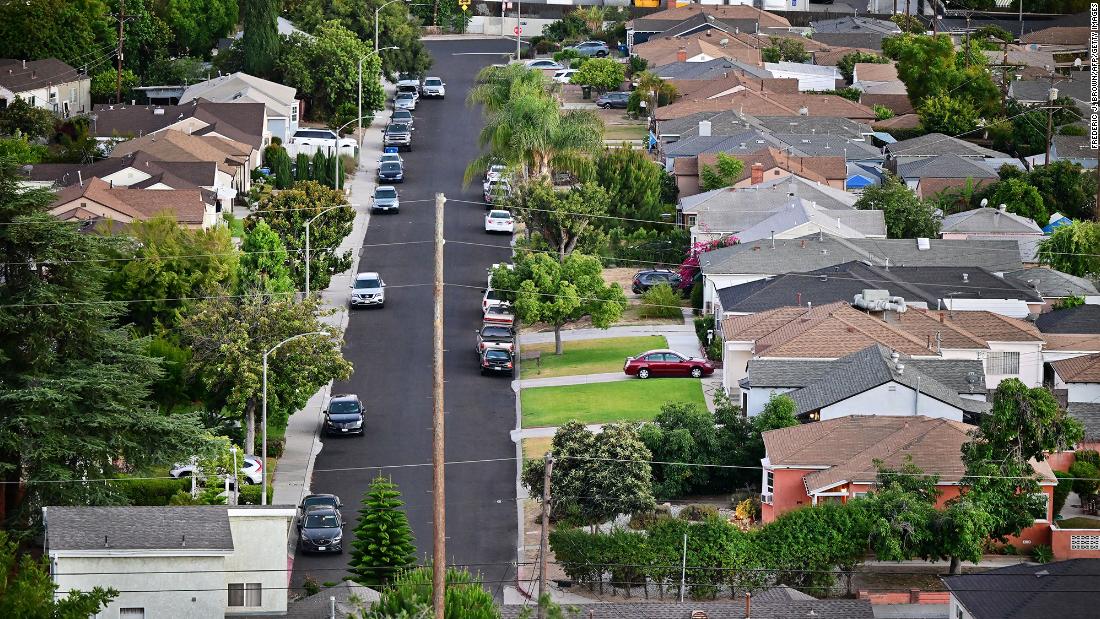The US housing market just entered an awkward phase
All right, Jay Powell, part of your plan seems to be working: Fewer people are buying homes. But that’s not translating to lower prices — at least not yet.
At the same time, sales fell for the fifth month in a row, down some 14% from a year ago.
Now, in simple economics (the only kind I know), when prices get too high, that should soften demand — which should in turn force prices down. But that takes time, especially when the market is as white-hot as it’s been for the past two years.
Right now, it’s an awkward moment when neither buyers nor sellers are all that happy.
There are a few reasons for that:
- Mortgage rates are double what they were a year ago. The standard 30-year fixed-rate mortgage stood at 5.5% this week, up from 2.8% a year ago. Naturally, that’s spurring potential buyers to hold off and hope for a better deal.
- Inventory has improved slightly but remains historically tight. Home builders are slowing construction on new homes, understandably wary of getting caught with a glut if a recession comes along and craters demand.
- Sellers, meanwhile, may have gotten too greedy. Think about it: How many neighbors or acquaintances do you know who’ve sold their house for twice what they paid for it, within days of listing? That’s the sellers’ market everyone’s come to expect.
- Key quote: “Buyers can’t figure out what is the right price,” Mark Zandi, chief economist at Moody’s Analytics, told the Wall Street Journal. “Sellers are very reluctant to give up” on the price they expected to sell for a few months ago.
Sales are likely to keep falling as buyers get priced out by mortgage rates, which are influenced by the Federal Reserve’s key interest rate policies. And the Fed is all but guaranteed to keep raising rates aggressively until this historically high inflation reverses course. (Tune in next Wednesday when we see what Jay Powell and his merry band of nerds has in store for us this time…)
Despite that overall sales decline, certain markets are still bumpin’. Miami, for example, saw median home prices rise 40% from a year ago. (Orlando and Nashville homes were up nearly 31%.)
BOTTOM LINE
“A combination of higher prices and higher mortgage rates clearly has shifted the dynamics in the housing market,” said Lawrence Yun, NAR’s chief economist. “Even people who want to buy are simply priced out.”
Even though home sales have slowed back to a 2019 pace, the market remains head-scratchingly brisk. The number of days a property is on the market before going into contract is the swiftest ever, at 14 days. (A year ago it was 17 days, and a more typical market would see properties on the market for close to 30 days.)
“Maybe buyers are trying to take advantage of a lower locked-in rate…They want to sign the contract and close the deal quickly,” Yun said.
But sellers should take note: This brisk time on the market is not likely to last, Yun said.
NUMBER OF THE DAY: 98%
RATIONING BEGINS
Temperatures are scorching across Europe, but leaders are already planning for what may be a long, painful winter.
Here’s the deal: The European Union unveiled its emergency gas rationing plan on Wednesday, urging its 27 member states to curb gas demand by 15% and push manufacturers to adopt alternative energy sources.
This is the rationing moment many Europeans feared would result from Russia’s invasion of Ukraine in February.
Why now?
A key natural gas pipeline linking Russia to Germany has been shut down for the past 10 days for routine maintenance. And there’s a decent chance, according to European officials, the Russian state-owned gas company will simply refuse to resume deliveries tomorrow when the maintenance is supposed to wrap up.
“Russia is blackmailing us. Russia is using energy as a weapon,” said EU Commission President Ursula von der Leyen.
Already, Russia has shown it is willing to weaponize its energy supplies, cutting off some countries because they refused to pay their bills in rubles (which would violate European sanctions). And last month, Russia cut flows through the pipeline by 60%, blaming the West’s sanctions.
President Vladimir Putin said this week that Russia would “fulfill all of its obligations” in supplying gas to Europe. But, like, it’s Putin — no one knows what to actually expect.
That uncertainty is a big part of the problem for Europe’s economy.
See here:
- Fears of energy supply disruptions have pushed benchmark gas prices up by about 85% since the invasion of Ukraine, according to the Intercontinental Exchange.
- On Wednesday, prices rose 5% to as the deadline for the pipeline’s reopening inched closer.
- Like the United States and other developed economies, Europe is dealing with soaring inflation. And political upheaval. And climate change. And a discernible shift in the direction of the economic rebound.
- A European recession isn’t a given. But “a sharp downturn in growth is 100% sure,” my colleague Julia Horowitz writes.
BOTTOM LINE
Energy officials say Europe must find ways to save 12 billion cubic meters of gas — equal to about 3% of its annual consumption — over the next 12 weeks to avert disaster.
“This is a big ask, but it does not exaggerate the scale of what is needed,” said Fatih Birol, executive director of the International Energy Agency, earlier this week.
“It is categorically not enough to just rely on gas from non-Russian sources — these supplies are simply not available in the volumes required to substitute for missing deliveries from Russia,” he added.


/cloudfront-us-east-1.images.arcpublishing.com/pmn/RFVTBRHOFRLNHSLE7QC6BAEWBI.jpg)
